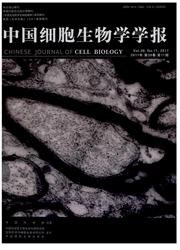

 中文摘要:
中文摘要:
细胞氧化还原状态(redox status)或氧化还原势能(redox potential)是细胞重要的生理指标之一,它的稳态影响细胞的功能活动和生命活动。氧化还原状态主要指细胞的活性氧(reactive oxygen species,ROS)水平,受活性氧生成系统与清除系统共同调控,同时也能够对下游大分子、亚细胞区室及细胞增殖、分化和凋亡等产生影响。虽然对分子及细胞水平的氧化还原调控及其对细胞整体的影响研究相对较多,但对细胞器自身或亚细胞区室水平的关注不多,这些变化在细胞整体应激应答中的贡献也不清楚。该文简介细胞内主要的ROS生成系统与清除系统,并对目前各亚细胞区室的氧化还原状态及其调控的研究和认识进行主要综述,以期能够深入而全面地理解细胞的氧化还原调控及其影响。
 英文摘要:
英文摘要:
Redox status or redox potential is one of the most important and fundamental cellular physical signs and its homeostasis affects cell function and cell life. Redox status refers to the level of reactive oxygen species(ROS) which is coordinated regulated by both of the generation system and scavenging system and in turn regulates downstream molecules, organelles and cells, such as cell proliferation, differentiation and apoptosis. So far, the redox regulation and its effects as a whole have been reported. However, only few studies showed the redox alterations and regulators of organelles or subcellular compartments, its impact on the structure and function of them, eventually the contributions to the overall response to the stress. After summarizing the general intracellular ROS generation system and ROS scavenging system, this review focuses on the specific redox regulator system in subcellular compartments and the consequences of redox changes, which will give rise to an in-depth and comprehensive understanding of the cellular redox regulation and its impacts.
 同期刊论文项目
同期刊论文项目
 同项目期刊论文
同项目期刊论文
 期刊信息
期刊信息
